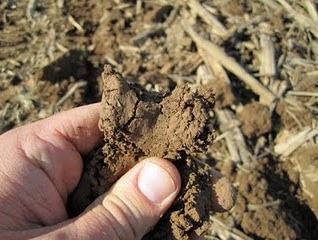Chad Lee, Grain Crops Extension Agronomist, University of Kentucky
Often this spring, I have warned farmers not to plant one day too early to avoid "mudding in" the corn or soybeans.
When we plant just one day too soon, we increase the chances of getting sidewall compaction and run a higher risk of keeping the roots bound within the furrow. Roots trapped in the furrow can lead to some real problems later in the growing season.
However, yesterday, I recently disregarded all of that caution and mudded in soybeans.
|
|
My reasons were as follows. We had a small window of no rain. We had a lot of studies and locations to get planted. If it rained immediately after planting (which it did), maybe, just maybe the sidewall compaction will not be as bad.
Rain was in the forecast for the next six days, so we didn't know when our next opportunity for planting would be. All of these factors conspired to encourage me to go against better judgement and plant the soybeans.
Why pass all of this along to you? Sometimes we all make decisions that are less than ideal. When we make suggestions and recommendations for crop management, we often give you the best-case scenarios. At times, the best-case scenario is not an option.
Some producers tell me that we "baby" our research studies too much and they want more "real world" conditions. Many of my research studies endure the same environmental challenges as your crops. (Some studies we "baby" a study with irrigation because of a particular objective.)
Most studies get to undergo real-world conditions, and at times, decisions that carry with them higher risks for problems.
So, if problems occur later in this field, I will not blame the seed company or the chemical company or the fertilizer company. If problems occur later in this field, I will blame myself for not having the patience to wait a little longer.
As the season progresses, I will update you on how these soybeans are doing.

 Soil condition at planting time. The soil should crumble out of the hand rather than staying together in a ribbon. The soil is still a bit too wet for ideal planting. (Univ. of Kentucky photo)
Soil condition at planting time. The soil should crumble out of the hand rather than staying together in a ribbon. The soil is still a bit too wet for ideal planting. (Univ. of Kentucky photo)




Post a comment
Report Abusive Comment